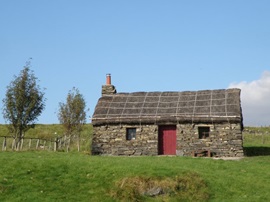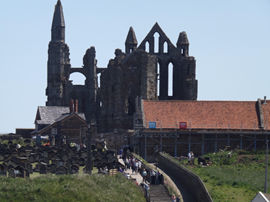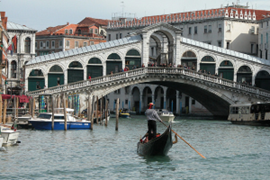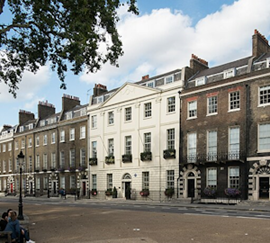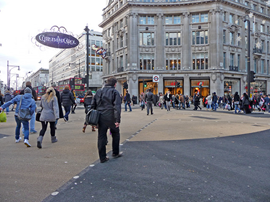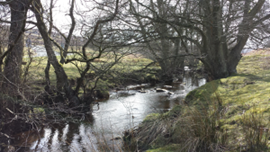Wentworth Woodhouse
Wentworth Woodhouse Preservation Trust sees itself as having the greatest heritage challenge of this generation and a unique opportunity to advance heritage skills.

|
| Consulting the community. |
The great stories of Wentworth Woodhouse are many: politics, class war, industry and infidelity, to name just a few. But arguably the greatest of them all has been unfolding before our eyes over the last seven years and will continue to do so over the coming decade.
The decline of Wentworth Woodhouse was on every historic building supporter’s radar. It was apparent to the great and good of heritage that the vast buildings that make up the Grade I listed site were falling increasingly into disrepair, the formidable Palladian east front, the baroque west front and the enormous riding school and stables crumbling before their eyes. How could it be that one of the country’s finest architectural palaces, that had survived the great 20th-century elimination of the country house, was falling into dereliction? How could it be saved, and what could be done with it to justify the enormous cost of restoring and regenerating such a vast complex of buildings? Who could possibly undertake such a challenge?
There is a simple reason why Wentworth Woodhouse is being saved. It is a site of great architectural beauty, both internally and externally, boasting over 20 fine state rooms, including the jaw-dropping Marble Saloon, and it harbours over 300 years of fascinating history, conversations and events that took place there. But it is the extraordinary love of the house, expressed by the communities that surround it, that act as the driver for its restoration today. From the very start, when Marcus Binney and SAVE Britain’s Heritage launched the campaign to raise funds to purchase the site and to form what is today the Wentworth Woodhouse Preservation Trust, everybody knew it was going to be the greatest heritage challenge of our generation. It seemed an almost impossible task, to raise funds to buy the site being just the start; to go on and raise millions more for its restoration seemed to some to be a mountain that would be just too high to climb. But we all love the underdog, and the communities, stakeholders, politicians across all parties, civil servants, planners and funders all wanted, and continue to want, to see the project succeed.
Harnessing that support has been critical to the trust. Any building preservation trust that takes on an historic building does so as the developer of last resort. These projects are complex, and Wentworth is no exception. Having a clear vision that everybody has contributed to and feels a sense of ownership of is the key. In 2016 the government announced a package of £7.6 million grant support for the repair of some (and by no means all) of the roofs. It was a drop in the ocean but nevertheless a critical factor in giving trustees the confidence to push on with the purchase, knowing that immediate repairs could be carried out to stop the water ingress which was destroying the fabric of the buildings. As part of that grant award process, a green book appraisal of the proposed business plan for Wentworth Woodhouse was carried out. It all stacked up: regenerate the site with new uses and ensure its long-term future by delivering a sustainable business model. But once on site, the trust felt strongly that a master plan should be developed and that its vision for the future of Wentworth should be shaped by the people of Rotherham and South Yorkshire.
The master planning exercise involved visiting other sites to hear and learn from others’ experiences; numerous community engagement events where people were given the opportunity to put forward their thoughts and ideas; and meetings with the planning authority and highways department, potential funders and statutory consultees, taking on board their ideas and thoughts. By its launch in 2018, everybody understood and supported the vision for Wentworth Woodhouse. The harnessing of that support was the critical foundation from which the project could build. The master plan sets out clearly how the buildings will be restored and regenerated, and the modern uses they will deliver. It also sets out core values to which every activity the trust delivers are related. These values are a fundamental factor in all the decisions made at Wentworth.
The core value of engagement is to engage with, listen to and work with local communities and wider audiences. Engaging hearts and minds to celebrate the site as an asset to the region and the nation is paramount. It is by engaging communities that we can deliver on our second core value: opportunities – using Wentworth Woodhouse as a remarkable heritage asset to provide multiple year-round opportunities for the advancement of skills. It is only by engaging with the communities, stakeholders, authorities and consultees that we can understand what the opportunities are and how to provide them.
As part of the roof repair programme the team agreed that a public walkway and lift system should be introduced to allow public access to the roof to witness first hand just how their money, be they taxpayers or donors, was being spent. It also provided the opportunity to inspire visitors to consider traditional heritage skills as a career, to learn more about the challenges that lay ahead for the trust and to get more actively involved.
The development phase of each project at Wentworth involves a dedicated activity programme, using creative arts and imaginative engagement programmes to encourage people to input their ideas into the plans. People, organisations and agencies need to feel involved and that their voices and opinions are heard. The collaborative approach works.
Today the trust has completed the government-funded roof repair programme and will shortly complete two further capital works projects, all on time and budget. Across these projects the trust will have delivered almost £10 million of improvements to the site since 2017. The Camellia House project is due to be delivered in 2022, a further £5 million investment. The success of the project has been defined by a team philosophy. The architectural design team from Insalls, the main contractor Woodheads, the WWPT team, the regular presence of Giles Proctor from Historic England, and the supportive approach from the planning authority, all provide for a productive methodology to what are challenging projects.
The support from the public and their enthusiasm to see Wentworth Woodhouse as ‘The People’s Project’ has been unwavering. Over 200 volunteers are now actively working at the site, some of them giving their time and skills full-time. The skills provided include those one would traditionally expect to see on such a project: fundraising, maintenance, events delivery and catering. We are also blessed with two fully trained film production crews which provide us with a fantastic digital record of the work taking place, and a team of researchers which helps to inform our story telling. The support that volunteers bring and the cooperation of our partners are critical if the trust is to raise the more than £130 million needed to deliver the vision.
This article originally appeared as ‘Wentworth Woodhouse: the people’s project’ in Context 169, published by the Institute of Historic Building Conservation (IHBC) in September 2021. It was written by Sarah McLeod, chief executive of the Wentworth Woodhouse Preservation Trust.
--Institute of Historic Building Conservation
Related articles on Designing Buildings
- Aberdeenshire and the North East of Scotland Preservation Trust.
- Conservation.
- England's Co-operative Movement: an architectural history.
- Four decades of SAVE campaigns.
- Great Yarmouth Preservation Trust.
- Heritage Under Pressure: threats and solutions - studies of agency and soft power in the historic environment.
- IHBC articles.
- Institute of Historic Building Conservation.
- Scotland's Town Partnership.
IHBC NewsBlog
Notre-Dame Cathedral of Paris reopening: 7-8 December
The reopening is in time for Christmas 2025.
Stirling Prize-winning Salford building to be demolished
The Centenary Building will be bulldozed as part of the wider £2.5bn Crescent regeneration project
Volunteers work to transform 100-year-old ‘hidden’ building into bothy
The building, named Druimnashallag, is located southeast of Oban.
The new ‘Arches for HERs’ Demo site, from the Getty Conservation Institute via HE
It shows how organisations responsible for historic environment records (HER) management can benefit from its powerful features.
ICOMOS-CIF 2024 Symposium celebrates 40th anniversary in Venice
It aims to critically review current practices and theories of conservation of built heritage around the world, and more.
HES establishes new national centre for retrofit of traditional buildings
HES plans to develop the centre follows £1m of funding from UKRI Arts and Humanities Research Council.
High Court rejects oral appeal against tower block decision in historic Bloomsbury
The request was for a full Judicial Review hearing against Camden Council’s approval of a 74m-high tower block in Bloomsbury.
Mayor of London and Government announce bold plans to transform Oxford Street
Plans include turning the road into a traffic-free pedestrianised avenue, creating a beautiful public space.
Crystal Palace Subway, for 160th anniversary
The remarkable Grade II* listed Crystal Palace Subway in South London begins a new era following major restoration.
National Trust brings nature back to an area twice the size of Manchester in less than a decade
The National Trust has achieved its aim of creating or restoring 25,000 hectares of priority habitat on its land by 2025.









